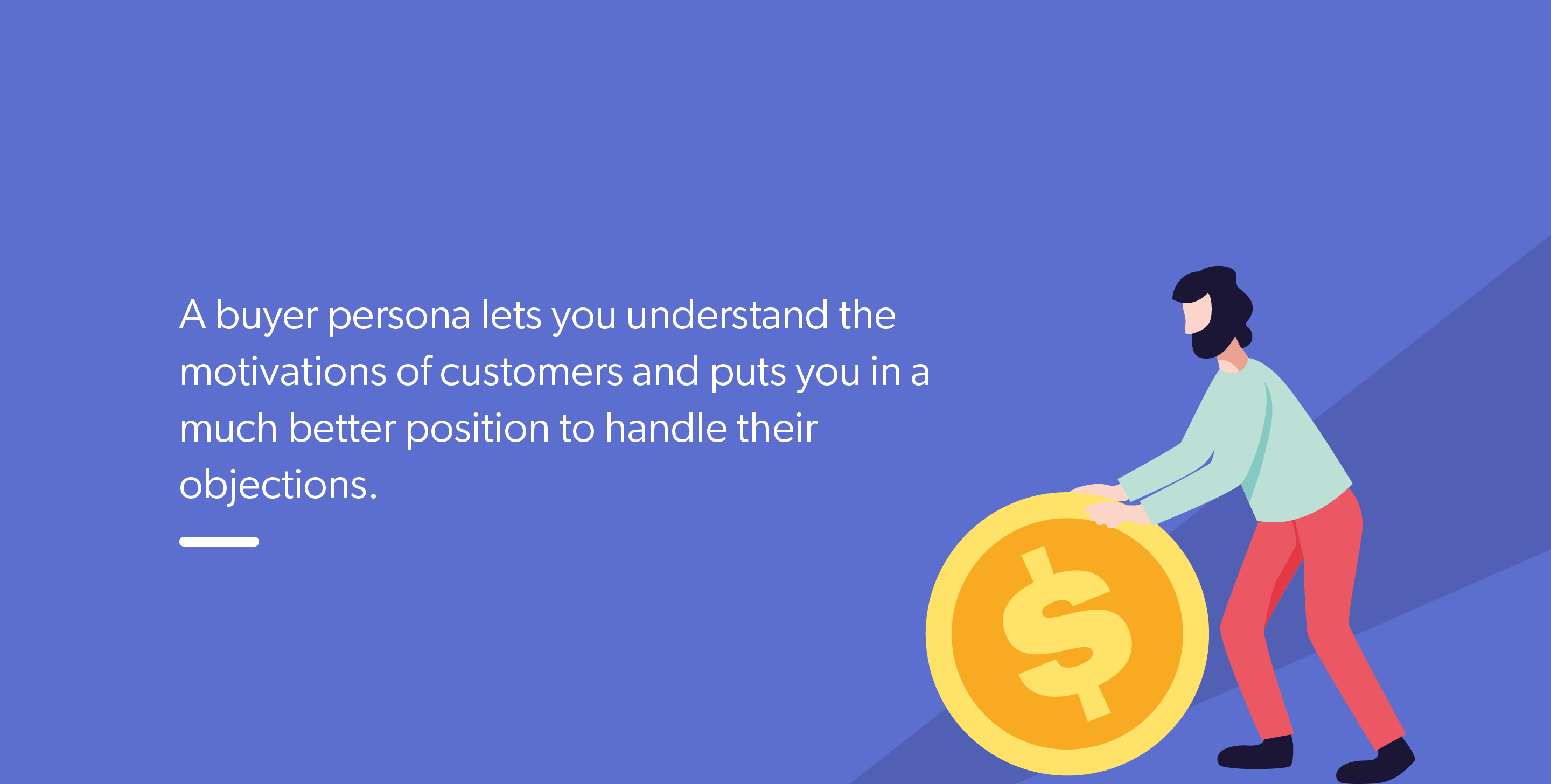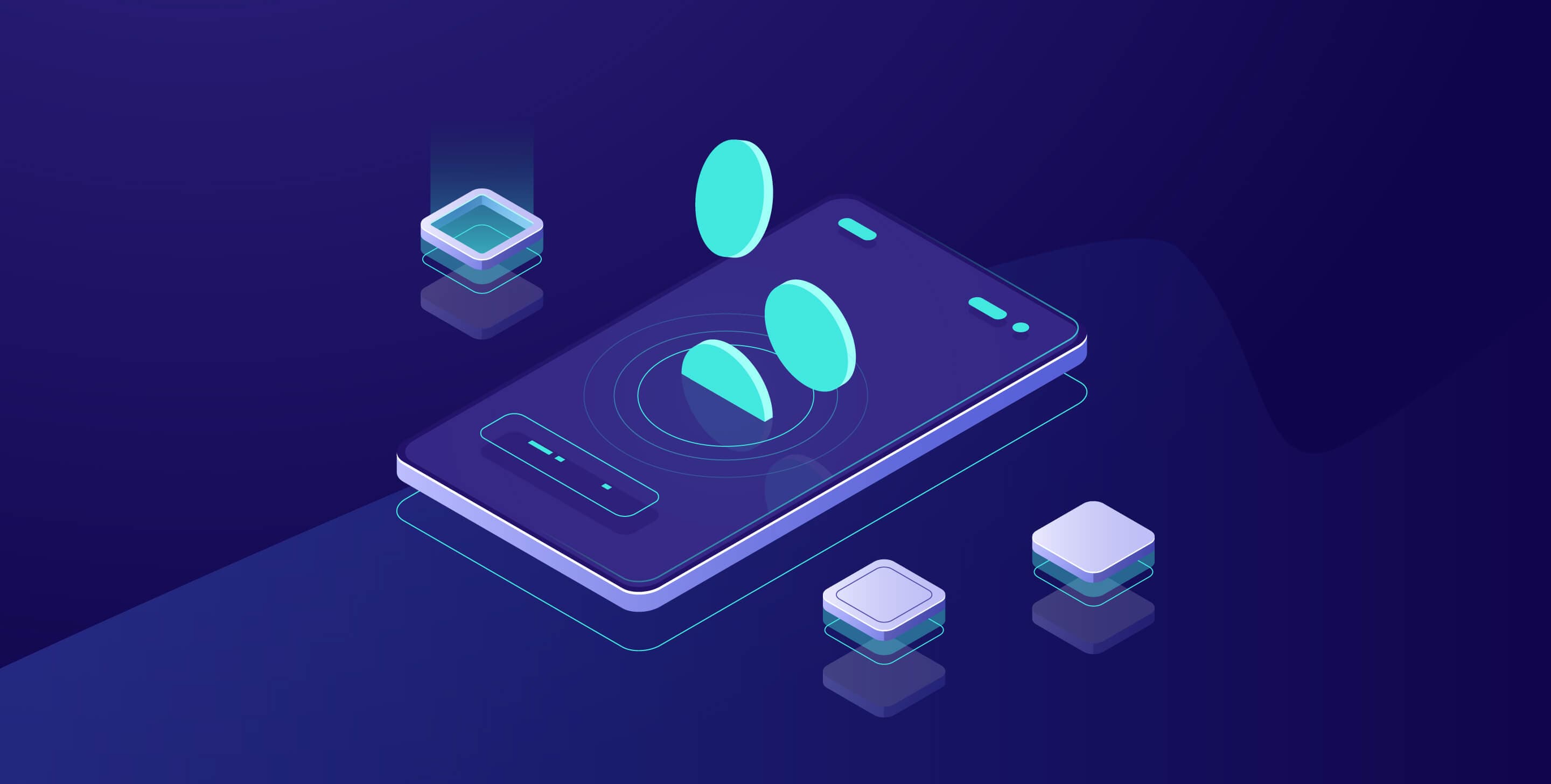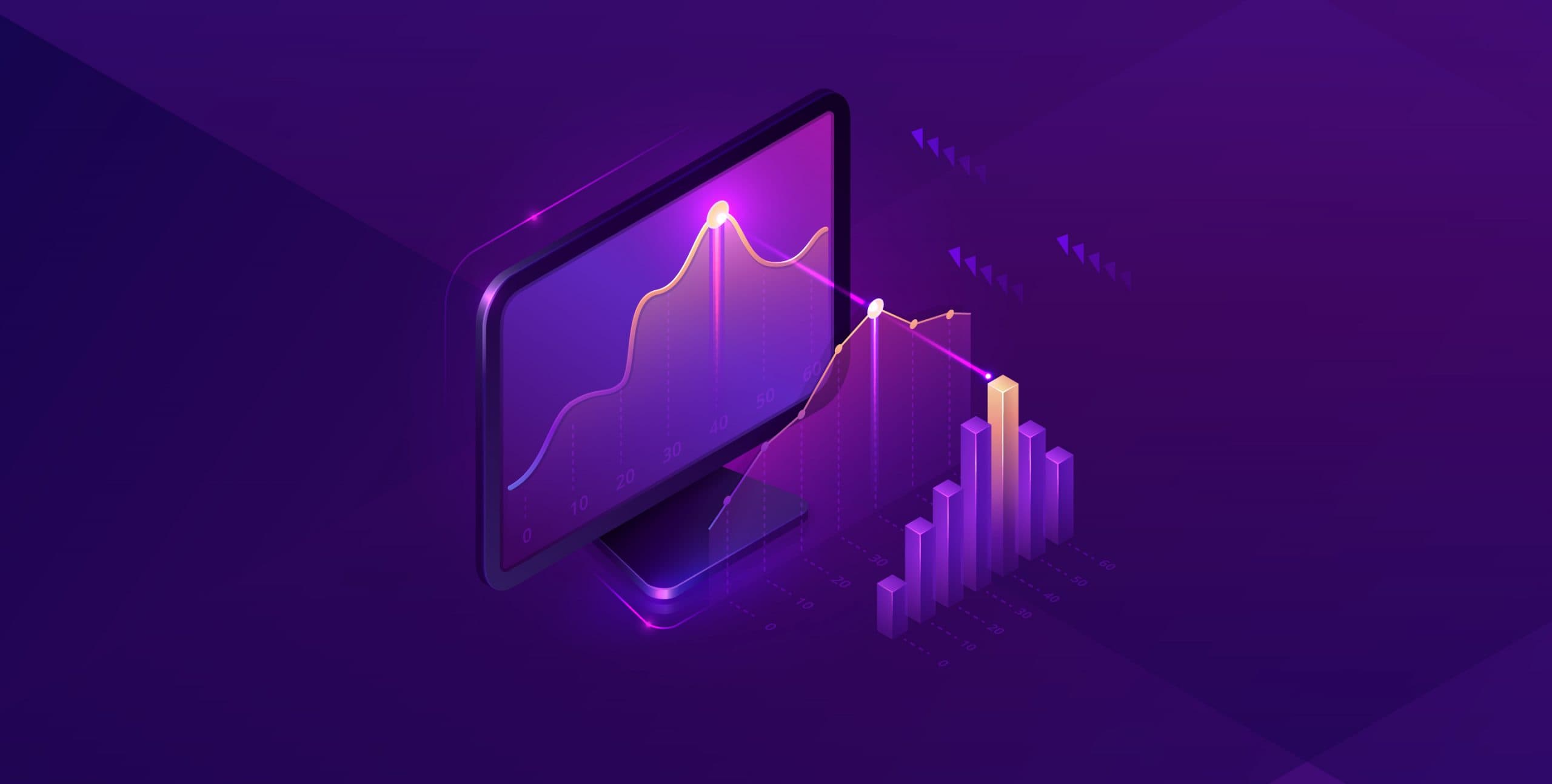A semi-fictional representation of your ideal customer is called a buyer persona. It is arrived at based on market research and data about your existing customers.
Let’s say you sell services that are exclusive to CEOs. You wouldn’t be targeting people between the ages of 15 and 25, nor would you look at someone currently in school and certainly not someone whose designation says Janitor or someone who uses TikTok.
You get the drift.
By knowing who exactly you need to target, your marketing gets better, your communication strategy will get refined and you will have better results.
To find customer persona, it will also take inputs from customer demographics, behaviors, motivations, goals, data from competitors, primary and secondary research, etc.
Most businesses would have at least 4-7 buyer personas. Once you create all these personas, ensure they are different from the others and represent a decent size of customers in that range.
Having clear buyer personas will help you during each customer journey stage. You will understand where to offer what kind of content and what will work.
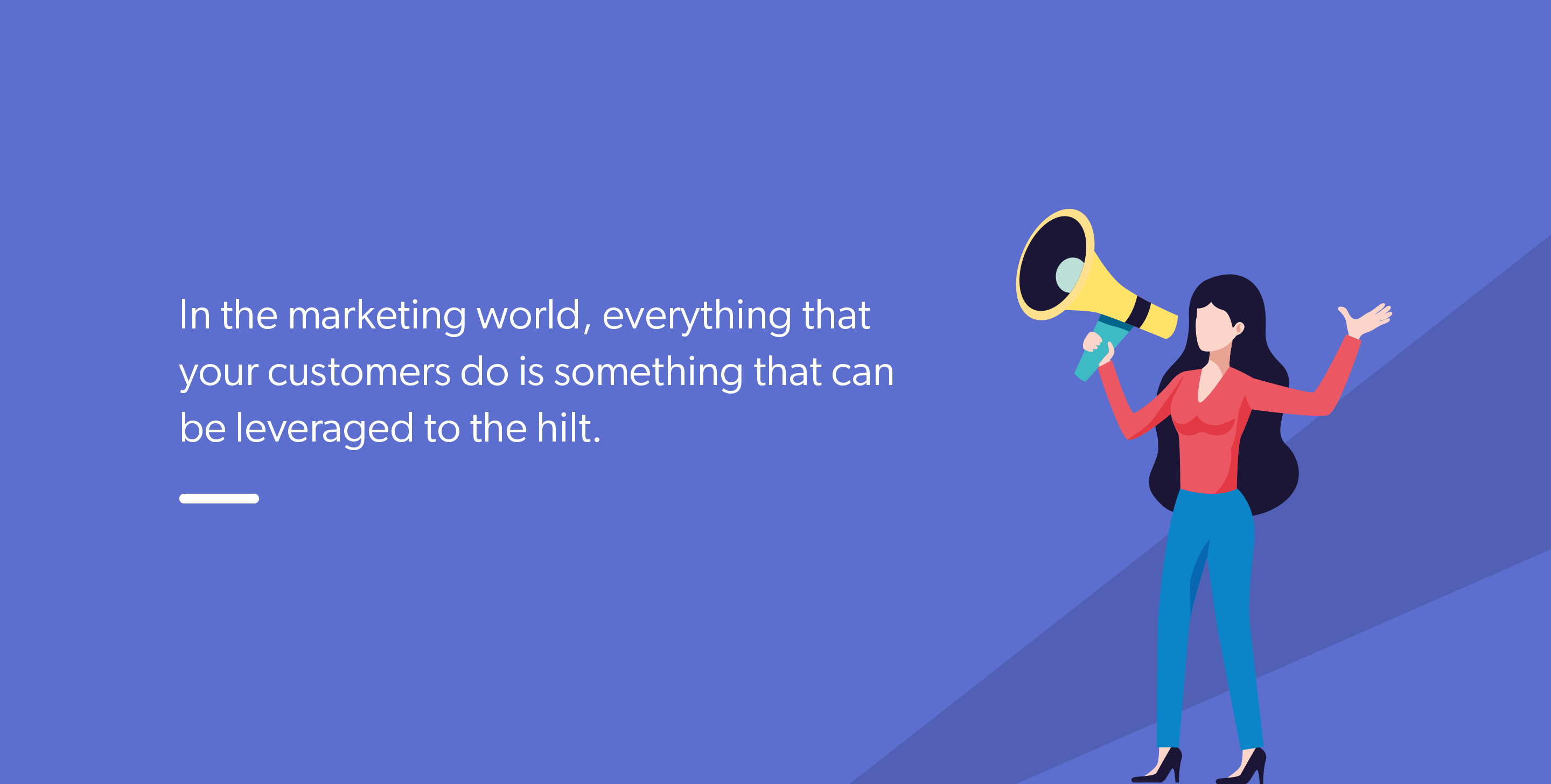
Benefits of Creating Buyer Personas
Understanding who your customer is, what they want, and how they operate will put you in a position to offer them things that no one else can. If you are unsure why a customer buys something from you, you will not be able to provide them with the best solution they deserve.
#1 Understand customers better
Buyer personas will give you greater clarity about different types of customers, their motivations, their user journey, etc. You will understand what they want and how they do things.
By charting buyer personas, you will better understand their shopping methods, buying patterns, customer journeys, pain points, etc.
#2 Knowledge of where they spend their time
In the marketing world, everything your customers do can be leveraged to the hilt. Once you better understand who your customers are, you can sell anything to them.
Having different buyer personas lets you know where they spend most of their time. It will help you understand how they get information about different products during the Consideration stage of the customer buying journey.
#3 Overcome objections
One of the holy grails for salespeople around the world is handling objections. The ability to say the correct thing to assuage the minds of the prospective customer is the #1 skill that salespeople should possess.
You can tell the right thing only when you know why your customer is objecting.
Having a buyer persona, you will be able to understand your customers’ motivations, and you will be in a much better position to handle their objections.
#4 Market segmentation
Creating a customer persona indeed makes the market segmentation process even easier. All of your customers come from different backgrounds; they have other objectives, motivations, and so on.
A customer who buys your product might have a different objective, while another customer might have something else in mind.
If you want to know why different segments of customers behave and shop differently, then you need to find out the different segments of customers based on their characteristics. By dividing them, you will be able to target them better.
#5 Better leads
When you refine your customer persona, your targeting will be more robust, and your communication will be at its best. The potential customers who reach out to you or the ones whom you target will be closest to your ideal customer.
Remember this again- not everyone is your customer.
Just because you get hundreds of leads a day doesn’t mean it will benefit your bottom line. By having buyer personas, you will have a better sense of who to market and get better leads.
Steps to Creating a Buyer Persona
Even if you think your target audiences are similar across various places, there would be a lot of differences that you might or might not have noticed unless you have a keen eye for the details.
As we mentioned earlier, all businesses have at least 4-7 buyer personas.
Let’s say your target audience is business owners. Here are a few of the variations you might have.
Mallory, 21, is a sophomore at Harvard University. He has a startup that helps businesses with marketing services. While they are self-funded, they are making money. He plans to drop out and continue working on his startup full-time.
Roger, 58, is a Senior VP at a Fortune 500 firm. He is from an Ivy League School. He shops only premium products and has a penchant for collecting souvenirs from different countries. His company is looking for a similar product like the one that you offer.
Steve, 36, is a Marketing Manager at a privately held firm, and they are looking for a similar solution, although at a cheaper rate. Steve is connected to many other decision-makers as they are in the same profession. It would be great to offer a discount for him as it would open up the market for your business.
Do you understand how each of them is from different backgrounds? But they are still probable customers for the brand because they need it. Would it be possible that there would be similar customers who are in the same situation as them? Yes, of course.
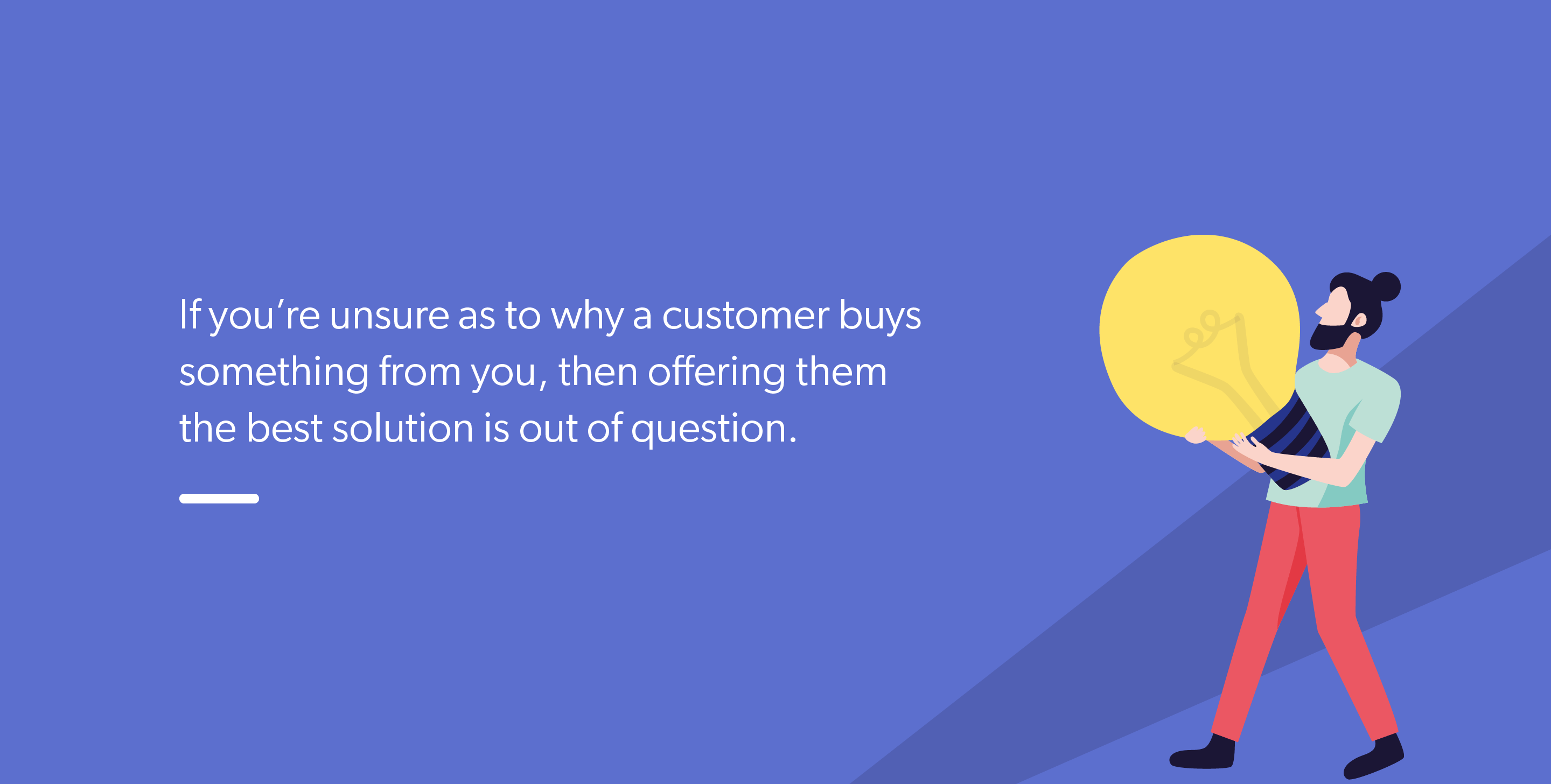
But your marketing message needs to be different for each of these customers. Create a communication strategy that is tuned to these people.
The tone and language should be used based on who they are, their needs, their challenges, and how you can solve their issues without a fuss.
They should be created with the help of internal and external research.
Here is how you can start. Choose one target customer and create a buyer persona with their information in mind. Ask them a lot of questions to learn more about them.
Audience Research
To get complete details about your customers, you need to find them through different sources. Asking your customers is the easiest way to do it.
Also, the insights that you get from your customers will be more valuable than anything else.
Your customers have engaged with your product and are in much better shape to answer your questions regarding the product than anyone else. But before that, you need to gather basic data about them.
Demographics data
This is the first level of information that you can get from your customers. You can ask your customers the following questions.
- Where are you from?
- What is your work like?
- What is your designation?
- Are you single/married?
- What is your gender?
- What is your household income?
- Do you have children?
- Is there a part-time job or is it your only source of income?
By knowing the answers to the above questions, you can segment them into different groups.
Questions about their education and work:
- What is your education level?
- Which college did you go to?
- What was your grade point in college?
- Is your work in line with the degree you earned?
- What is your immediate work-related goal?
- Who are your employees?
- For what qualification did they hire you?
Questions about the industry that they are in:
- Which industry do you work in?
- What are the services/products that they offer?
- Who are the kind of clients you have?
- How many employees does your company have?
- What is your annual turnover?
- Are you a funded company?
- Are you looking for funding?
Role:
- What is the kind of work that you do?
- Does your work involve going out in the field?
- Who are the kinds of people you meet?
- How long have you been employed at this company?
- Who do you report to?
- What are his qualifications?
- What are the kinds of tools/software that you use daily?
This information can be used both for B2B and B2C clients.
As a B2C company, use this information to refine your buyer persona. As a B2B company, you can use this information to understand the decision-makers in the company.
Key Performance Indicators :
- What are your KPIs?
- Do you have to ensure that others in your team also achieve their KPIs?
- What are the tasks that you do every day?
- What are the tools that you require but are not using right now?
Questions about your product:
- How can our product help your company?
- What do you think are the features of our product that will help you immensely?
- What are the products that your competitors are using? Why do you think they are using them?
- What can we do to make you use our product?
- Let us know in detail about your expectations
- What do you think is our most valued feature?
There are many more questions that you can ask that will help you refine your buyer persona. The more narrowed your buyer persona, the higher the chances at which you can do better targeting.
Discuss with all the stakeholders involved before you start drafting the questions. Not all questions are going to make sense for your audience. Only choose the ones that apply to them.
Apart from external research, some of the internal research that you can do are as follows:
- Read industry magazines that talk about the customers
- Understand how customers reach out to you
- Talk to all your stakeholders as well as from credible outside sources
- Use external tools to gather more details
Finding prospects for researching Buyer Personas
It would be best if you talked to more people to find out more about your buyer personas. It could start with your existing customers, prospects you are reaching out to, old customers, referrals, etc.
Each piece of information that you get from all these sources is precious.
Talking to your existing customers
Your insights from here are more valuable than any other source. Some of these customers are already part of your buyer persona.
They have worked with your product; they know precisely how they benefited because of the product and can also tell if it worked for them.
Go out of your way and talk to customers who think they didn’t get the best out of your product. While talking to them, you will be able to understand what difference you can make to your product so that it becomes attractive to them.
The feedback you get from dissatisfied customers is more valuable than the ones you get from your satisfied customers.
Talk to prospective customers.
The only reason why you are targeting certain businesses is that they are closest to the kind of customers that you want to have.
Ask them questions based on how far along they are in the decision-making process.
Each of them has different types of insights that they could give you.
If they are in the consideration stage, you could ask them why they chose yours and a few other products to the next stage.
Why did they not narrow down other competitors of yours? These are priceless pieces of information that can help you with competitor study as well.
Ask for referrals
Another way to get closer to your audience is to talk to people who have already gone through this.
Ask your business network if they would connect you with other business professionals who might have looked for a similar solution.
They would be closer to your target audience and could give you much information about your thought process and how they finally arrived at a decision.
Create your buyer persona.
Once you have all the information ready, you can arrive at a conclusion based on commonalities among a specific set of people.
Divide your ideal customers into different categories based on their specific traits.
Based on the answers, create a document for each persona. Once you discover one buyer persona, you can ask more questions to find other buyer personas. Remember that a business can have at least 4-7 buyer personas. So, try to find as many variations as possible.
By identifying the buyer persona, you will never target wrongly. You will eventually save money, time, and effort since your targeting was on the spot.
Here is one more thing we would like you to remember: buyer personas keep changing. Yes, it doesn’t stay the same forever. The change happens because the market changes, the economy changes, your business changes, and, more importantly, customers change.
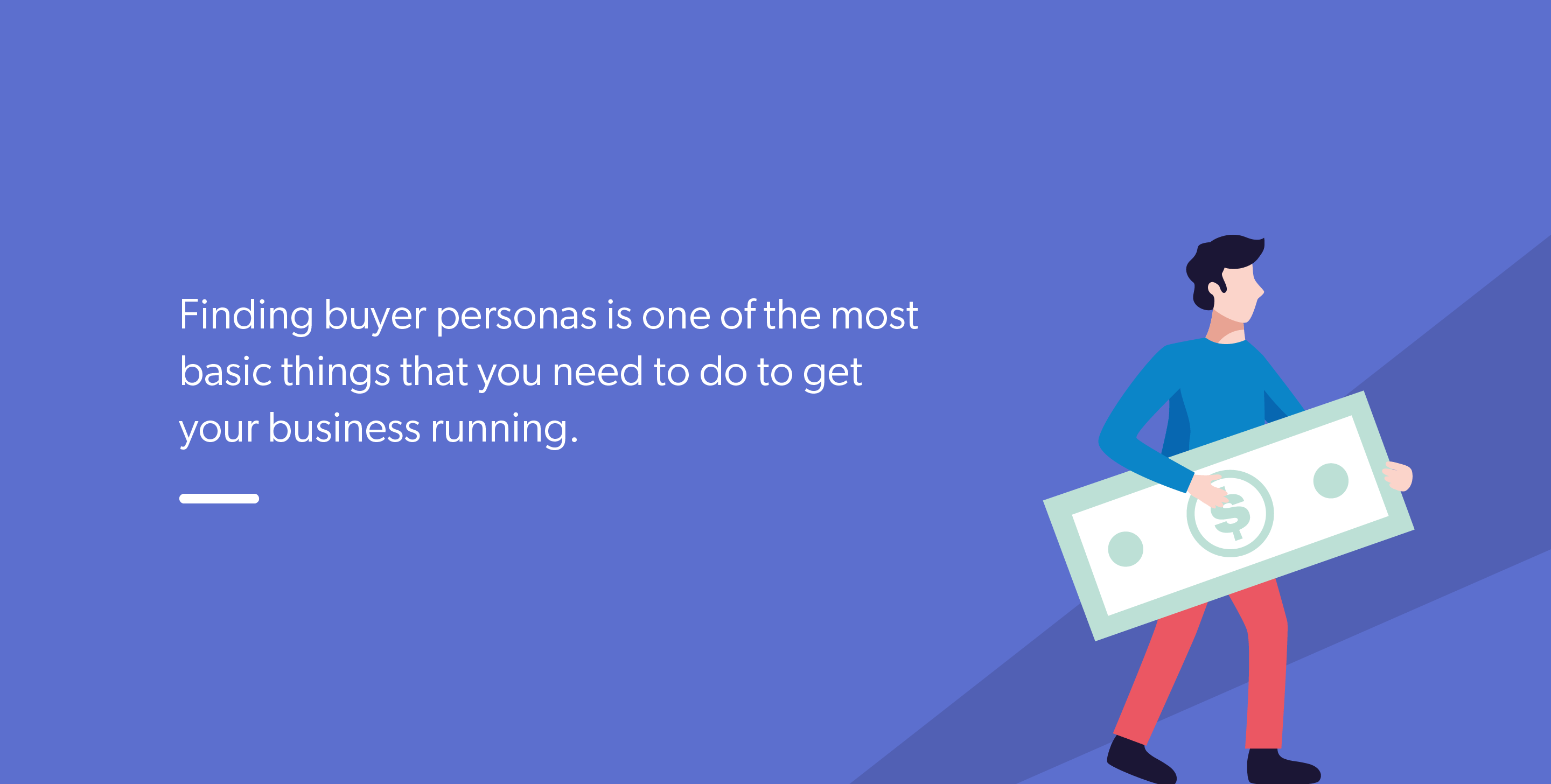
Conclusion
Finding buyer personas is one of the most essential things you need to do to get your business running. Even if you don’t have customers, you can always use data from your closest competitors to determine your buyer personas. While it is a time-consuming affair, it is worth the hassle.
Having a defined buyer persona means you can make products that your customers will love.
You will also have to spend less on marketing because your efforts are only concentrated on a few customers, and more importantly, they are much more effective since your communication strategy is also tuned for their needs.
Once you know your buyer personas, ensure the message is passed to everyone in your team. When you have this, all the teams can work together, and the results will also be concentrated.
You will significantly increase the ratio of incoming leads and convert the ones you will be pursuing based on buyer personas.
Also, remember that you need to create different types of content for each customer. Otherwise, others will feel left out. Your employees should also be taught about this, especially the impact buyer personas will have on your bottom line and general efficiency.

